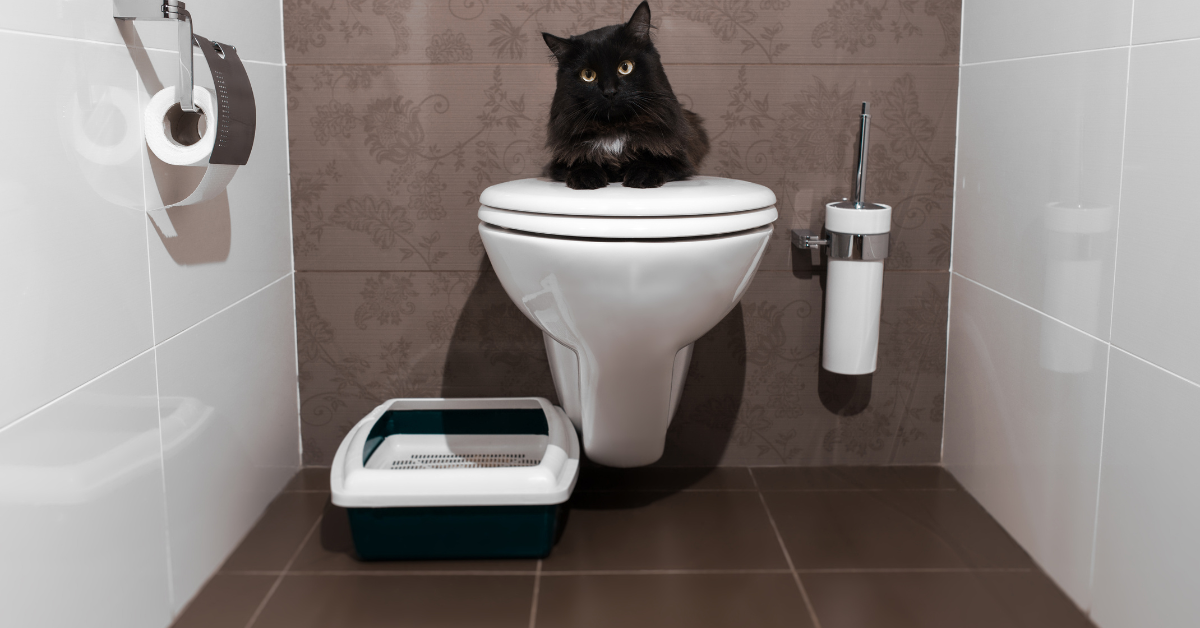The Risks of Flushing Cat Poop in Your Toilet - Precautionary Measures
The Risks of Flushing Cat Poop in Your Toilet - Precautionary Measures
Blog Article
Just how do you really feel on the subject of Can You Flush Cat Poo or Litter Down the Toilet??

Intro
As feline owners, it's necessary to be mindful of just how we dispose of our feline friends' waste. While it might seem convenient to flush cat poop down the commode, this method can have damaging repercussions for both the atmosphere and human health.
Alternatives to Flushing
Luckily, there are more secure and extra responsible methods to throw away feline poop. Think about the following options:
1. Scoop and Dispose in Trash
One of the most typical technique of disposing of cat poop is to scoop it into a biodegradable bag and toss it in the trash. Be sure to make use of a specialized litter scoop and throw away the waste promptly.
2. Usage Biodegradable Litter
Choose eco-friendly pet cat trash made from materials such as corn or wheat. These clutters are environmentally friendly and can be securely thrown away in the trash.
3. Hide in the Yard
If you have a backyard, consider burying feline waste in a designated location away from vegetable gardens and water sources. Make certain to dig deep enough to prevent contamination of groundwater.
4. Install a Pet Waste Disposal System
Purchase an animal waste disposal system especially made for feline waste. These systems use enzymes to break down the waste, reducing smell and ecological impact.
Wellness Risks
In addition to ecological problems, flushing cat waste can likewise pose health dangers to people. Feline feces may consist of Toxoplasma gondii, a parasite that can trigger toxoplasmosis-- a potentially extreme ailment, particularly for expectant ladies and individuals with damaged body immune systems.
Ecological Impact
Purging feline poop presents harmful microorganisms and bloodsuckers right into the water system, posturing a considerable risk to aquatic communities. These pollutants can negatively impact aquatic life and compromise water quality.
Verdict
Accountable family pet ownership expands beyond providing food and sanctuary-- it additionally includes appropriate waste administration. By avoiding purging pet cat poop down the commode and selecting alternate disposal approaches, we can minimize our environmental footprint and secure human health.
Why Can’t I Flush Cat Poop?
It Spreads a Parasite
Cats are frequently infected with a parasite called toxoplasma gondii. The parasite causes an infection called toxoplasmosis. It is usually harmless to cats. The parasite only uses cat poop as a host for its eggs. Otherwise, the cat’s immune system usually keeps the infection at low enough levels to maintain its own health. But it does not stop the develop of eggs. These eggs are tiny and surprisingly tough. They may survive for a year before they begin to grow. But that’s the problem.
Our wastewater system is not designed to deal with toxoplasmosis eggs. Instead, most eggs will flush from your toilet into sewers and wastewater management plants. After the sewage is treated for many other harmful things in it, it is typically released into local rivers, lakes, or oceans. Here, the toxoplasmosis eggs can find new hosts, including starfish, crabs, otters, and many other wildlife. For many, this is a significant risk to their health. Toxoplasmosis can also end up infecting water sources that are important for agriculture, which means our deer, pigs, and sheep can get infected too.
Is There Risk to Humans?
There can be a risk to human life from flushing cat poop down the toilet. If you do so, the parasites from your cat’s poop can end up in shellfish, game animals, or livestock. If this meat is then served raw or undercooked, the people who eat it can get sick.
In fact, according to the CDC, 40 million people in the United States are infected with toxoplasma gondii. They get it from exposure to infected seafood, or from some kind of cat poop contamination, like drinking from a stream that is contaminated or touching anything that has come into contact with cat poop. That includes just cleaning a cat litter box.
Most people who get infected with these parasites will not develop any symptoms. However, for pregnant women or for those with compromised immune systems, the parasite can cause severe health problems.
How to Handle Cat Poop
The best way to handle cat poop is actually to clean the box more often. The eggs that the parasite sheds will not become active until one to five days after the cat poops. That means that if you clean daily, you’re much less likely to come into direct contact with infectious eggs.
That said, always dispose of cat poop in the garbage and not down the toilet. Wash your hands before and after you clean the litter box, and bring the bag of poop right outside to your garbage bins.
https://trenchlesssolutionsusa.com/why-cant-i-flush-cat-poop/

I have been very serious about Can You Flush Cat Poop Down The Toilet? and I'm hoping you enjoyed reading the new entry. Do you know somebody who is interested by the subject? Why not promote it. We cherish reading our article about Don’t flush cat feces down the toilet.
Call Today Report this page